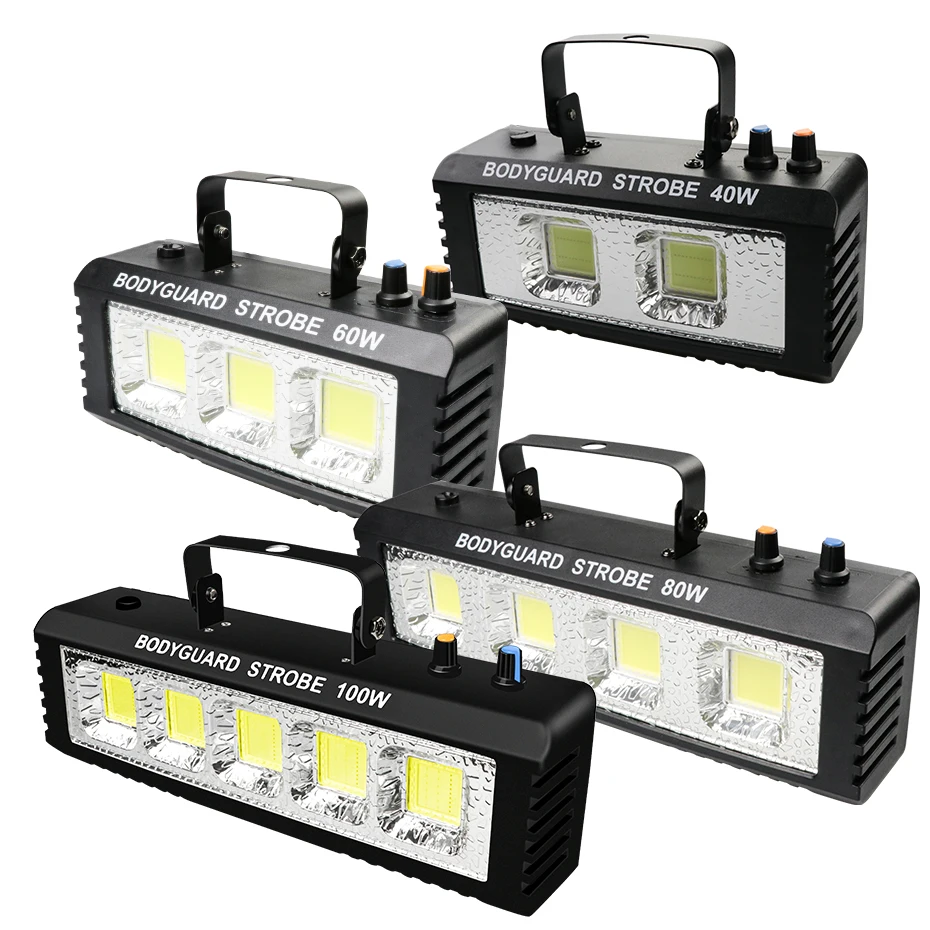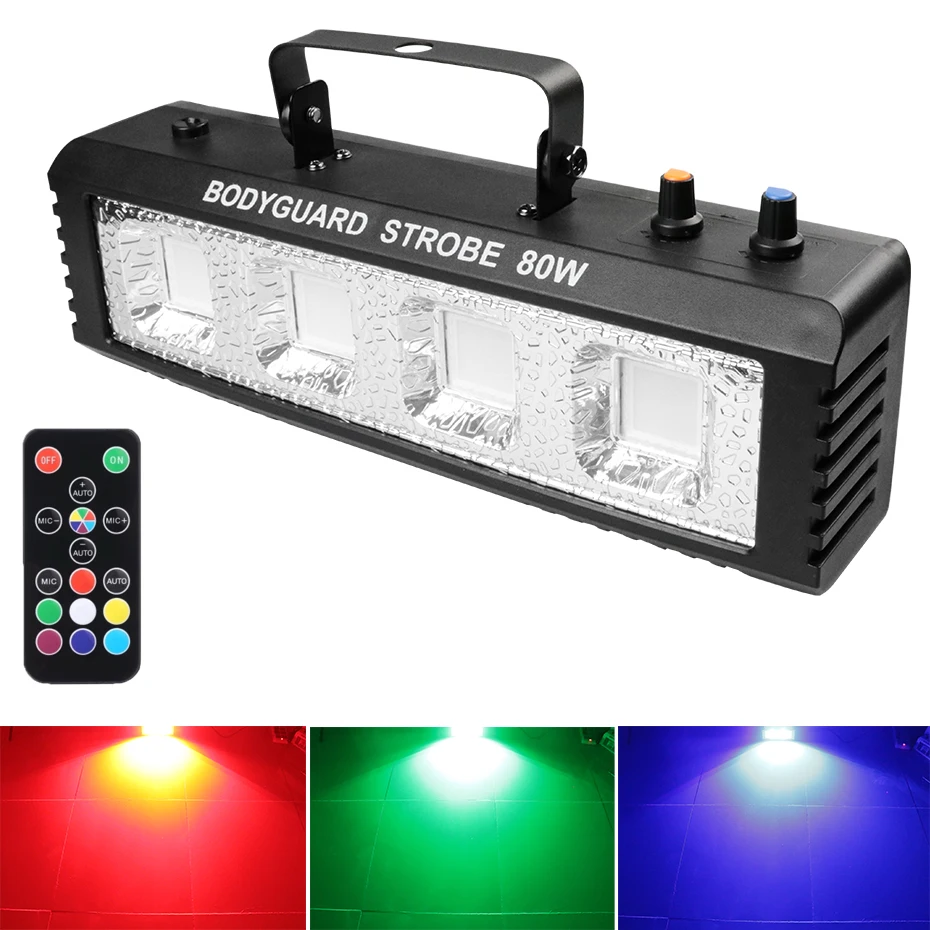Strobe lights are the quintessential effect for creating high-energy moments on any dancefloor. From a DJ’s masterful build-up to a wedding reception’s electric slide, these powerful flashes of light can transform an ordinary gathering into an unforgettable experience. This comprehensive guide will delve into everything you need to know about strobe lights, from their technical workings to how you can harness their power for your next event.
What is a Strobe Light?
At its core, a strobe light is a device designed to produce regular flashes of bright, intense light. Unlike constant lighting, the rapid on-off pattern of a strobe creates a dramatic, freeze-frame effect that is synonymous with energy and excitement.
The fundamental technology involves a capacitor storing a large amount of electrical energy and then releasing it in a brief, powerful burst through a gas-filled tube, most commonly xenon, which produces a very bright and short-duration flash. Modern strobe lights, especially for mobile DJs and party use, have evolved significantly. They now often feature high-output LEDs, which offer long lifespans—often 50,000 hours or more—and the ability to produce a full spectrum of RGB colors in addition to classic white. This versatility makes today’s party strobe light a multifaceted tool for any entertainer.
Key Features to Look for in a Modern Strobe Light
When shopping for a disco party light, it’s crucial to look beyond the basic specs. Here are the key features that separate amateur gear from professional-quality equipment.
1. Power and Brightness
The power rating of a strobe light, measured in watts, is a primary indicator of its potential brightness. Models typically range from 40W for smaller venues up to 350W or even 1000W for large-scale professional events. However, wattage alone doesn’t tell the whole story. For a more accurate picture, consider the flash energy, measured in Joules (J), which indicates the intensity of each individual flash. A higher flash energy results in a more powerful and penetrating flash, capable of cutting through other ambient lighting.
2. Color Options: RGB + White
The best modern strobe lights offer dual capabilities: a piercing white flash and a full RGB (Red, Green, Blue) color spectrum. This allows you to match the lighting to the music’s mood—white for intense moments, and any color to fit a theme or genre. Advanced models achieve this by combining different LED types, such as dedicated white LEDs and multi-color RGB LEDs, to produce millions of vibrant hues.
3. Control Modes and Flexibility
Versatility in control is what makes a strobe light truly intelligent. Look for units that offer multiple control modes:
- DMX512: The professional standard for stage lighting control. It allows you to precisely synchronize multiple lights from a central console.
- Sound-Active / Music Control: The light automatically responds to the beat and rhythm of the music, making it perfect for DJs who want a hands-free experience.
- Master/Slave: Where one “master” light can control several “slave” units, synchronizing their flashes automatically.
- Auto Run: Pre-programmed shows that run without any external input, ideal for unattended operation.
4. Build Quality and Durability
The environment of a DJ booth or party can be demanding. A durable strobe light is essential. Look for robust housing materials like ABS construction, which is known for its impact resistance and longevity. An adjustable bracket is also a valuable feature, allowing you to mount the light on a stand, truss, or wall for optimal angle and coverage. For those considering outdoor events, checking the IP (Ingress Protection) rating is wise; a rating like IP33 indicates protection against dust and water spray.
Technical Specifications Decoded: Understanding the Details
Let’s break down the common technical terms you’ll encounter in a product specification sheet.
- Strobe Rate: This refers to the speed of the flashes, usually measured in flashes per second (Hz). A typical range of 1-25 times/second allows for everything from slow, dramatic pulses to rapid, frenetic bursts.
- Dimmer: A 0-100% linear dimmer allows you to control the intensity of each flash, providing subtlety and enabling you to tailor the brightness to the room’s size and atmosphere.
- Input Voltage: Modern electronics often support a wide voltage range (e.g., AC100-240V), making them suitable for use in different countries without a heavy power transformer.
- LED Life Span: Quality LED-based strobes can have a lifespan of 50,000 hours or more, meaning years of reliable service before needing replacement.
How to Use Your Strobe Light for Maximum Impact
A strobe light is a powerful effect, but its effectiveness depends on how you use it. Here’s a guide to deploying your dj party lights like a pro.
Setting Up for Success
- Positioning: Place your strobe light high and centered for the most uniform coverage. If you have two units, positioning them on either side of your DJ booth or stage can create a more immersive effect.
- Connection: For simple sound-active mode, just plug in the power. For DMX control, you’ll need a DMX controller and appropriate cables to daisy-chain your lights.
- Testing: Always test your strobe before the event. Check different modes and speeds to ensure it’s working correctly.
Creative Use Cases and Tips
- The Build-Up: The classic technique. Use a slow strobe pulse during a musical build-up, gradually increasing the speed as the track approaches the drop. When the beat kicks back in, switch to a fast, intense flash for a explosive effect.
- Color Themes: Use the RGB color mixing to match your event’s theme. A wedding might use soft ambers and pinks, while a Halloween party would call for deep oranges and greens.
- Less is More: Overusing the strobe can be overwhelming. Use it sparingly for key moments to maintain its dramatic impact. A good rule of thumb is to use it for no more than 10-15 seconds at a time.
For those seeking a versatile and user-friendly option, a great choice is this strobe light model which combines RGB and white colors, multiple control modes including voice control, and durable ABS construction with an adjustable bracket. You can find more details and specifications here.

Ideal Applications: Where to Use Your Strobe Light
The versatility of modern strobe lights makes them suitable for a wide array of events:
- DJ Sets & Nightclubs: The quintessential environment for strobes, essential for creating high-energy peaks.
- Weddings & Receptions: Perfect for the dance party portion of the evening, adding excitement to classic group dances.
- Theater and Live Shows: Used for dramatic effect in musicals, concerts, and stage productions.
- School Dances and Parties: A simple way to make a gymnasium or hall feel like a professional venue.
- Festivals and Holiday Events: The bright flashes are excellent for attracting attention and creating a celebratory mood.
Frequently Asked Questions (FAQ)
How long do strobe lights typically last?
High-quality LED strobe lights are built for longevity. Many models offer a lifespan of 50,000 hours or more. This translates to many years of regular use, making them a reliable investment for DJs and event planners.
Can I use a strobe light outdoors?
You can, but you must check the light’s IP rating. A rating of IP33 or higher indicates some level of protection against dust and moisture. However, unless specifically designed for it, strobe lights should never be exposed to heavy rain or standing water. Always use a covered area and ensure all electrical connections are safe and dry.
Are strobe lights safe for everyone?
It is important to be mindful that strobe effects can trigger photosensitive epilepsy or migraines in a small percentage of the population. It is considered good practice, especially at public events, to announce when strobe lighting will be used. Avoid very fast strobe rates for extended periods.
What is the difference between sound-active and DMX control?
Sound-active mode is an automatic setting where the light’s internal microphone picks up sound and makes the strobe flash to the beat. It’s simple and great for beginners. DMX control is a professional, wired protocol that allows precise manual control from a lighting console, letting you program exactly when, how fast, and what color the strobe flashes for perfect synchronization with your show.
What does the power rating (e.g., 100W) mean for a strobe light?
The wattage generally indicates the electrical power consumption and is often correlated with the light’s overall output potential. A higher-wattage strobe will typically produce brighter and more intense flashes, which are better suited for larger spaces or when you need the effect to cut through other strong ambient lighting.
Ready to Light Up Your Events?
Understanding the features and techniques behind strobe lighting empowers you to make informed decisions and create truly captivating atmospheres. Whether you’re a seasoned DJ or hosting a memorable party, the right strobe light is a key ingredient for success.
To explore a specific model that incorporates many of the features discussed in this guide, such as versatile power options, intelligent voice control, and robust construction, you can check out the product link provided earlier.

